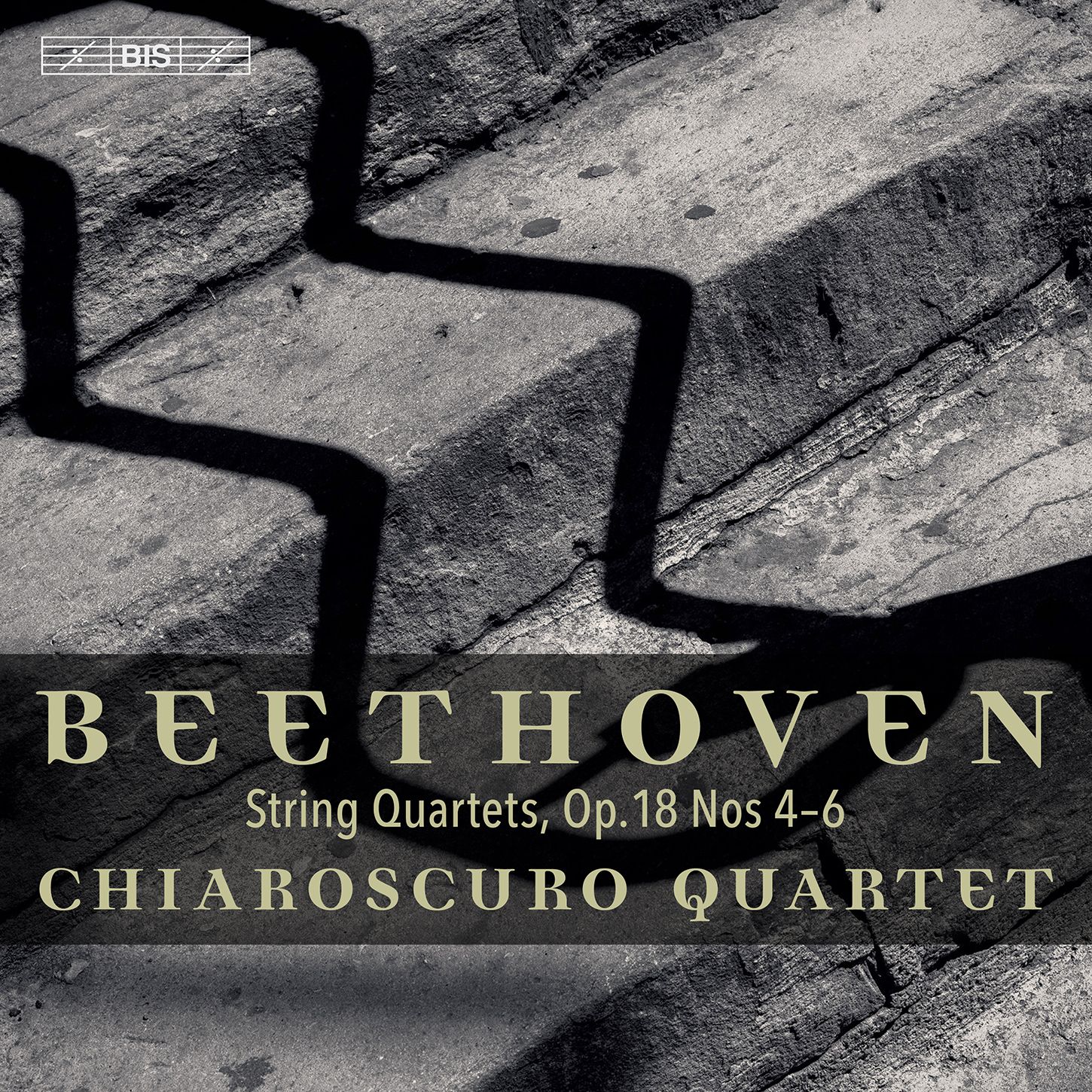Gloriously sophisticated Beethoven from the Chiaroscuro Quartet

Here on Classical Explorer, we previously met the Chiaroscuro Quartet in Quartets by Haydn: his Op. 76, to be specific, Nos. 1-3 and Nos. 4-6. Now, they embark on the gretest cycle of them all: the Beethoven Quartets. This new disc completes their Op. 18 traversal, offering the final three quartets.
Beethoven‘s Op. 18 is a set of six quartets published in 1801, in two volumes of three quartets each, all composed between 1798 and 1800. They are seminal in so many respects, and
We begin in Beethoven's best C-Minor for Op. 18/4. The members ofthe Chiaroscuro Quartet play on historical instrments to great effect: you can feel the power of the music in this first movement; but listen out for the miraculous shafts of light Beethoven writes in, beautifully performed by the present performers:
There is no slow movement here, instead an Andante scherzoso quasi allegretto, full of flockering half-lights, accents as unpredictable as flames. The ease of writing cloaks Beethovens' contrapuntal genius:
The Chiaroscuro Quartet revel in the Trio of the Menuetto - this is a truly beautiful account, balancing the moew restless Menuetto proper sections:
All this is crowned by a scampering, dynamic finale which finds the Chiarscuros delighting in Beethoven's teasings before the final, almost impossibly fast coda.
The A-Major Quartet, No. 5, has much Mozartean about it - , to the extent that its two final movements are modelled on Mozart's String Quartet, K 464. No missing Ibragimova's virtuosoty in the first movement, either:
The Mozartian slant of this work seems particularly pronounced in the grace of the second movement Menuetto; and just listen to the character the Chiaroscuros bring to the trio with its shifting accents; the shifting dynamic between of Mozartian and Beethovenian traits is beautifully wrought:
The “slow movement” here is a theme and set of variations, modelled on K 464. So let‘s put the two next to each otehr: below is the Beethoven with a complete performance (with score) of K 464 by the period instrument Quatuor Mosaïques:
Listen to how the Chiaroscro‘s Beethoven is a real emotional journey, with moments of almost outrageous rustic, echt-Beethovenian dance in this movement.
We can hear the nexus between he two quartets as well in the finales‘ mutual use of contrast and scampering textures:
One can hear Haydn rather than Mozart in the capricious wit of the first moveoennt of No. 6 (B flat-Major), with Beethoven adding his stamp in the accents, beautifully rendered by the Chiaroscuro Quartet here. And yet what a delicious sense of conersation tehre is between instruments later on:
The slow movement, an Adagio ma non troppo, is one of Beethoven‘s greatest achievements. Exquisite in its unfolding, with its increasing use of decoration, it also offers an opportunity to wonder at Ibragimova‘s purity of tone and rock-solid delivery. This movement is the crowning glory of the disc:
The sophistication of the Scherzo in this performance is remarkable: almost daemonic in its rhytmic play. It needs players like the Chiaroscuro, particularly a nimble cellist of the ilk of Claire Thirion.
The finale is famous for its slow introduction, an Adagio labelled “La Malinconia,” a harmonically progressive - and elusive - passage that almost feels like a second slow movement. In a performance such as this it is difficult not to hear pre-echoes of the composer‘s late style; the “alla tedesca” dance that follows (in the German style) sits in “La Malincolia”'s shadow; it is no surprise that the introduction reappears later in the movement (Beethoven had already re-introduced a slow introduction in the first movement of the so-called “Pathétique” Piano Sonata). Structurally, the movement is genius; as it is in every other way!:
The recording, produced by the experienced Andrew Keener, is wonderful. These are major interpretations of this repertoire; the music shines as if newly penned and yet beneath lies true understanding of process. Simply superb booklet notes by Richard Wigmore round off an excellent release. The playing time, incidentally, is just five seconds shy of 80 minutes.
... and incidentally, Alina Ibragimova gives a solo violin recital at London's Wigmore Hall this week on Friday, July 1. Details and booking here.
Beethoven Op. 18. 4-6 Chiaroscuro (BIS)